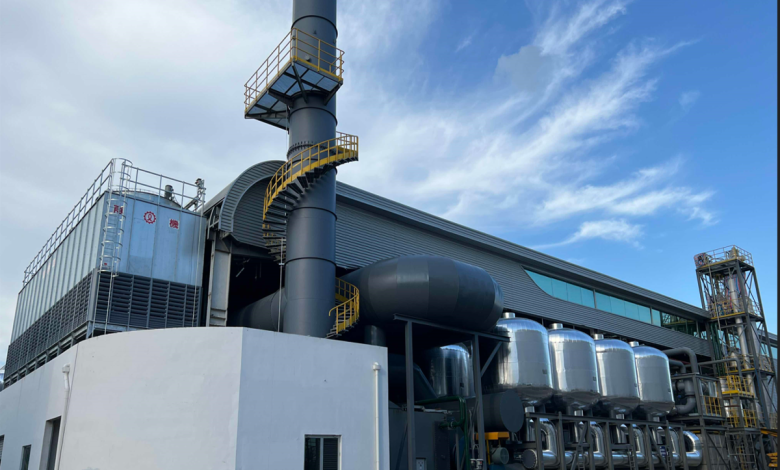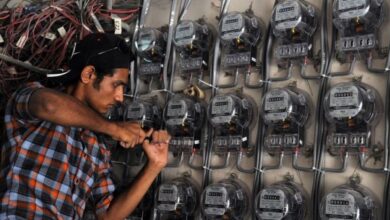Spevap Evaporators: Efficient Solvent Recovery & Concentration Solutions for Process Industries

Industrial processes across chemicals, pharmaceuticals, food & beverage, and waste treatment all converge on a common challenge: how to remove large volumes of water or solvent efficiently while preserving product quality and controlling operating costs. Evaporation remains one of the most versatile and scalable unit operations for accomplishing that goal. Spevap evaporators are engineered to deliver high thermal efficiency, robust reliability, and application-tailored performance—helping plants reduce waste volume, recover valuable solvents, concentrate product streams, and improve downstream yields. This blog introduces the fundamentals of evaporation, explains where Spevap systems fit, and outlines key design, operation, and lifecycle considerations that influence total cost of ownership.
Understanding the Evaporation Process
At its core, evaporation separates a volatile component—often water or an organic solvent—from dissolved or suspended solids by applying heat to drive a phase change from liquid to vapor. The resulting vapor is condensed and collected (for reuse, disposal, or further treatment) while the remaining liquid becomes increasingly concentrated. Industrial evaporator performance hinges on heat-transfer efficiency, control of boiling behavior, mitigation of fouling, and energy integration with plant utilities. By carefully managing temperature profiles, pressure, and residence time, an evaporator can achieve high concentration factors without degrading heat-sensitive materials or causing excessive scaling on heat-transfer surfaces.
Where Spevap Evaporators Are Used
Spevap evaporators serve a broad cross-section of industries that must balance product quality with sustainability and cost control. In specialty and fine chemicals manufacturing, they support solvent recovery and intermediate concentration steps that reduce raw material consumption. Pharmaceutical and biotech producers rely on controlled evaporation to concentrate fermentation broths, purify actives, and minimize batch-to-batch variability under validated conditions. Food and beverage processors use evaporation to thicken juices, dairy fractions, sweeteners, and flavor concentrates while preserving aroma compounds. Industrial wastewater generators deploy evaporators to reduce liquid disposal volumes and, in some cases, recover saleable by‑products or recyclable water. Across all these sectors, Spevap focuses on matching technology type and materials of construction to the thermal sensitivity, corrosiveness, and cleanliness requirements of each application.
Technology Platforms Offered by Spevap
No single evaporator design fits every process, which is why Spevap engineers systems across multiple technology platforms. Falling‑film evaporators are widely selected for heat‑sensitive products because the liquid forms a thin film that evaporates rapidly with short residence time and minimal thermal degradation. Forced‑circulation evaporators handle viscous, fouling, or crystallizing feeds by pumping fluid at high velocity through heat exchangers, maintaining turbulence to resist scaling while enabling higher concentration endpoints. Wiped‑film and thin‑film designs extend these benefits to extremely heat‑sensitive or high‑viscosity materials by continuously renewing the liquid surface with mechanical wipers. Multi‑effect evaporators reduce energy demand by cascading vapor from one effect as the heating medium for the next, exploiting progressively lower pressures and temperatures. For energy‑intensive duties, mechanical vapor recompression (MVR) or thermal vapor recompression (TVR) options recover and reuse vapor enthalpy, dramatically cutting steam consumption. Spevap works with clients to evaluate feed characteristics, target concentrations, and utility costs to recommend the optimal configuration—or hybrid systems that combine elements of several designs.
Energy Efficiency and Thermal Integration
Energy cost is often the largest operating expense in evaporation, so Spevap systems prioritize thermal efficiency from the earliest design stage. Strategies include optimizing heat‑transfer coefficients through surface selection and flow regime control; leveraging multiple effects to reuse latent heat; integrating process waste heat or low‑grade steam where available; and deploying vapor recompression technologies when electrical power pricing and load curves justify the capital. Smart control of approach temperature differences and condensate recovery further improves energy utilization. Plants pursuing decarbonization goals can integrate Spevap evaporators with heat‑pump loops, biomass boilers, or cogeneration schemes to lower overall greenhouse gas intensity per unit of concentrate produced.
Materials of Construction and Corrosion Resistance
The chemical makeup of the process stream strongly influences materials selection. Spevap specifies stainless steels, duplex alloys, nickel‑based alloys, titanium, graphite, glass‑lined steel, or engineered polymers depending on chloride content, pH extremes, solvent compatibility, and cleaning chemistry. Proper materials engineering protects heat‑transfer surfaces from pitting and stress‑corrosion cracking, extends service life, and reduces unscheduled downtime. For multi‑product facilities, compatibility with a range of cleaning agents and sanitizing chemicals is also essential, especially in regulated industries such as pharmaceuticals and food processing.
Controlling Fouling, Scaling, and Foam
Fouling and scaling degrade heat transfer, drive up energy use, and shorten run lengths between clean‑in‑place (CIP) cycles. Spevap addresses these challenges through hydrodynamic design, surface finishes, chemical conditioning options, and automated cleaning strategies. High shear in forced‑circulation loops, smooth tube metallurgy, optimized vapor‑liquid disengagement, and antifoam dosing all contribute to stable long‑term operation. Automated CIP skids can be integrated to reduce manual maintenance, document cleaning validation, and return the system to service quickly after turnaround.
Automation, Control, and Digital Monitoring
Modern evaporation systems benefit from tight process control and data visibility. Spevap integrates advanced instrumentation for temperature, pressure, flow, density, and concentration—allowing closed‑loop control of evaporation rate and endpoint solids. Distributed control system (DCS) or PLC integration supports recipe management, batch reporting, and alarm handling. Optional digital monitoring packages enable remote performance trending, predictive maintenance analytics, and energy benchmarking across multiple evaporator trains. These capabilities are particularly valuable in regulated environments that require electronic batch records and data integrity compliance.
Cleaning, Validation, and Hygienic Design
For applications in pharmaceuticals, biotech, nutraceuticals, or high‑purity food ingredients, hygienic design is non‑negotiable. Spevap offers sanitary configurations with clean‑in‑place spray devices, drainable piping slopes, crevice‑free welds, and surface finishes specified to industry guidelines. Automated CIP and steam‑in‑place (SIP) cycles can be validated to documented parameters for temperature, contact time, and chemical concentration. Designing for cleanability not only protects product quality but also shortens downtime and supports regulatory inspections.
Sizing and Selection Workflow
Selecting the right evaporator begins with detailed feed characterization—solid content, viscosity, boiling‑point elevation, fouling tendency, thermal sensitivity, and corrosiveness all influence design. From there, target concentration ratios, required throughput, and allowable thermal budget define heat‑transfer area and effect staging. Utility availability and cost (steam, electricity, cooling water, chilled water) guide decisions around single‑effect versus multi‑effect or vapor recompression. Pilot or bench evaporation studies may be recommended for complex or novel feeds to de‑risk scale‑up. Spevap’s engineering workflow includes process simulation, heat and material balance development, equipment specification, and integration planning with upstream and downstream unit operations.
Safety, Environmental, and Regulatory Considerations
Evaporation systems frequently handle flammable solvents, corrosive chemicals, or biologically active materials, so safety design is integral. Spevap incorporates pressure relief, inerting strategies, vapor recovery, leak detection, and containment features consistent with applicable codes and plant standards. Where volatile organic compound (VOC) emissions are regulated, condensate polishing, vacuum systems with recovery condensers, and thermal oxidizer tie‑ins may be required. For pharmaceutical or food applications, documentation packages can include material traceability, surface finish certifications, weld maps, and validation support to assist with regulatory submissions and audits.
Lifecycle Support and Service
Long‑term performance depends on more than initial design. Spevap provides commissioning assistance, operator training, spare parts programs, and performance audits to sustain throughput and efficiency. Remote diagnostics and predictive maintenance tools help detect fouling trends, declining heat‑transfer coefficients, or vacuum integrity issues before they escalate into unplanned downtime. Upgrade paths—such as adding another effect, retrofitting vapor recompression, or integrating advanced controls—extend equipment life and adapt capacity as production demands change.
Economic & Sustainability Drivers
Investing in an evaporator is justified when it reduces disposal costs, recovers high‑value solvents, concentrates sellable product, or unlocks downstream process efficiency. Energy‑efficient designs shrink utility spend and improve environmental metrics, while water recovery and waste minimization support corporate sustainability reporting. By pairing robust thermal design with digital performance tracking, Spevap evaporators help plants quantify return on investment over the full equipment lifecycle.
Conclusion: Partnering for Process Performance
Evaporation may be a mature unit operation, but its impact on product yield, cost structure, and sustainability goals continues to grow. Spevap combines process engineering expertise, flexible technology platforms, and lifecycle service to deliver evaporator solutions aligned with real‑world plant conditions. Whether you need to recover solvent from a specialty chemical process, concentrate a heat‑sensitive pharmaceutical intermediate, or slash wastewater disposal volumes, a properly specified Spevap evaporator can make a measurable difference.



